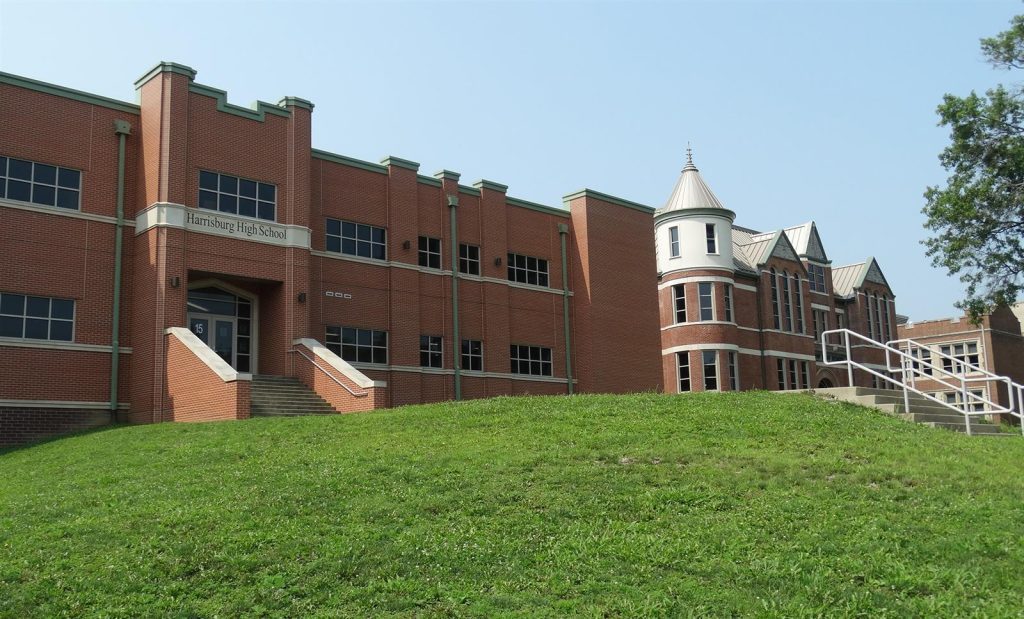
As Evidence Based Funding formula turns 5, lawmakers reflect on historic legislation
By PETER HANCOCK
Capitol News Illinois
phancock@capitolnewsillinois.com
SPRINGFIELD – Five years ago this month, Illinois lawmakers passed legislation that overhauled the way public schools in the state are funded.
The so-called Evidence Based Funding formula, or EBF, was designed to calculate the actual cost for each district to provide the kind of education the state expects, and then gradually increase the share of that cost that’s paid for by the state.
Over time, it was also supposed to narrow the disparity between the best-funded and worst-funded districts in the state, with the hope of lowering property taxes and improving academic achievement in the most underfunded districts.
Five years later, huge disparities still exist among districts, both in funding and academic performance, but lawmakers from both parties who were part of negotiating the new law say it has provided huge benefits, especially to those schools that were most underfunded.
“I use the example of East St. Louis, that I think at the time had the highest property tax rate but was nowhere near adequate spending,” said Andy Manar, a former state senator and now deputy governor who was a chief architect of the plan.
“And if you did the math at the time, the math would show that East St. Louis literally could not tax itself enough to generate the funds needed to say that the school district has an adequate level of spending to achieve the results that we as a state expect of that school district. They literally could not tax themselves into equity. It was mathematically impossible.”
In fiscal year 2018, the first year under the formula, the East St. Louis district was funded at 66 percent of adequacy. This year, it is funded at 96 percent of adequacy.
Republican state Sen. Chapin Rose, who represents a largely rural area in east central Illinois, said many of the districts in his area faced the same challenge.
“I do think that for many of the areas I represent, it was a lifeline,” he said. “It’s kept doors open and, in some instances, provided a much needed infusion, because they simply couldn’t keep going back to the property tax well. That was dried up.”
History of inequity
Illinois has traditionally relied on local property taxes to fund most educational spending. That has automatically led to built-in inequities because districts with relatively low levels of property wealth per-pupil must levy higher tax rates to raise the same amount of money as wealthier districts.
To offset those differences, prior to adoption of the EBF formula, the state used a complex formula to distribute state aid that was supposed to guarantee districts with modest tax bases a certain minimum level of “foundational” funding, although even the wealthiest districts received aid under that formula, even if they were more than able to raise adequate funding on their own.
Many districts complained that the formula never lived up to its promise of guaranteeing adequate funding to all districts, in part because the General Assembly did not fully fund the formula. Instead, it distributed “prorated” amounts, based on how much money was available in the state budget at the time.
Manar cited the example of Harrisburg High School, in southern Illinois, where the ceiling of the library had been removed because the district didn’t have enough money for basic repairs and maintenance.
“And, you know, we held a town hall on school funding in that library – the location underscored the need for the bill,” he said. “And Harrisburg High School wasn’t unlike so many other places across Illinois, not just rural parts of the state. It was a result of years of proration of general state aid, and years of the inability to tackle the very complicated nature of school funding.”
For decades, school districts across Illinois tried to turn to state courts to correct the inequities, arguing among other things that the 1970 Illinois Constitution provides that, “The State has the primary responsibility for financing the system of public education.”
But state courts have consistently declined to get into the school finance fray. As far back as 1973, the Illinois Supreme Court ruled that that provision was merely “a hortatory expression of a goal to be achieved” and not a mandate for the state to take over school funding.
In 1990, a group of 50 school districts calling themselves the Committee for Educational Rights sued the state claiming the system produced vast disparities in educational resources between rich and poor districts in violation of several provisions of the Illinois Constitution, including its equal protection clause and a clause requiring the state to provide “an efficient system of high-quality public educational institutions and services.”
But when that case reached the Illinois Supreme Court six years later, the justices ruled there were no judicial standards to determine whether the state was providing “high-quality” education and that the decision about how to fund schools – and how to balance the competing interests of equity and local control – was a legislative matter, not a judicial one.
The EBF formula
After more than a year of negotiations, Illinois lawmakers finally struck a deal that would, over a period of years, put more state money into public schools to bring the least-funded districts up to a level of adequacy – assuming, of course, that the General Assembly lives up to its obligations.
The final vote came during a special summer session in August 2017, during which lawmakers also ended the two-year budget stalemate with Republican Gov. Bruce Rauner.
The goal of the new formula is to gradually bring all districts up to an “adequate” level of funding, or having enough resources to cover the cost of providing the educational services the state expects. That takes into account a district’s total enrollment, poverty rate, the number of English language learners and a host of other factors.
Each year, under the law, the state is to add at least $350 million in new funding for schools, with the bulk of that money going to those furthest from adequacy. But the law provided that no district would see a reduction in funding from the final year before its passage, a so-called “hold-harmless” provision that meant even the wealthiest districts would continue to receive state aid.
People on both sides of the aisle said that was necessary because without a hold-harmless provision, the bill never would have passed.
“It’s a living breathing formula, and it changes year to year, and so the mechanics of the formula eventually fade that out,” Manar said. “But I think it brought a level of certainty. It brought a level of guarantee and, frankly, a level of comfort to a very complicated question of how we reform a very complicated and important system. …So a lot of people didn’t like it. I personally did not. But it was necessary to get it done.”
Republican Sen. Jason Barickman, of Bloomington, who was also a key negotiator in the process, agreed that it was politically necessary.
“It was a politically practical, pragmatic decision,” he said. “I was very focused on getting something done. And it was very apparent to me that we weren’t going to get something done without a hold-harmless. So while I think a hold-harmless has policy challenges, we weren’t going to let perfection get in the way of getting something done.”
So far in the first five years, the state has met or exceeded that funding target in all but one year, raising the state’s share of school funding from $6.9 billion in fiscal year 2017, the last year under the old formula, to $9.8 billion allocated this year.
It also drove the state’s percentage of K-12 education upward, according to ISBE data. In FY 2017, the state provided 24.4 percent of K-12 funding. In FY 2020, the latest year for which audited numbers are available, that number rose to 27 percent.
Signs of progress
According to data from the Illinois State Board of Education, it would still take another $3.6 billion in state funding this year alone to bring all districts up to 90 percent of “adequate” funding, a goal set in statute. But the state has made some progress toward addressing the needs of the least-funded districts.
In the first year of evidence-based funding, there were 168 districts that were funded at less than 60 percent of adequacy. Those were the ones that were first in line for new funding when the EBF formula took effect.
For the upcoming year, there are only two districts below that level – Washington Community High School District 308 in Tazewell County and Chaney-Monge School District 88, an elementary district in Will County. Both are funded this year at 59 percent of adequacy.
The gap between the least-funded and best-funded districts has also narrowed, if only slightly. During the first year, funding levels ranged from a low of 47 percent to a high of 288 percent of adequacy. This year, the gap ranges from 59 percent to 270 percent.
Gov. JB Pritzker said during a recent news conference he believes the state must continue to increase its investment in education to increase outcomes and decrease reliance on property taxes.
“A lot of good has been done, there’s no doubt about it,” he said. “And as you know, Evidence Based Funding was both necessary to get money to the schools that needed it most and to make sure that we’re improving the education funding overall, across the state of Illinois. I personally think that we need to fund our education system even more.”
So far, though, there is little evidence that the new money has helped improve academic performance for students because the COVID-19 pandemic severely interfered with annual testing in 2020 and 2021.
Prior to the pandemic, though, the connection between school funding and student achievement was evident.
For example, in 2019, the last year before the pandemic, Central City School District 133, an elementary district in Marion County, was the least-funded district in the state at 52 percent of adequacy. That year, only 26.8 percent of its students met or exceeded state standards in English language arts, and only 8.5 percent did so in math.
By contrast, Rondout School District 72, an elementary district in Lake County, was the best-funded district, at 280 percent of adequacy. There, 65.1 percent met or exceeded state standards in English language arts while 49.4 percent did so in math.
Like many states, Illinois did not administer state assessments in 2020 due to the pandemic, and results from the 2021 tests are believed to have been affected by the pandemic. Results of the 2022 tests will be released later this year.
Barickman recalled there was a debate over whether to tie increased funding to improved student outcomes, to hold districts accountable for the new money they would receive. In the end, he said, lawmakers chose to go another route by pairing the new funding system with a form of taxpayer-supported scholarships for private schools, what is now known as the Invest in Kids Act.
“No one was fully, you know, exactly happy, which generally means we probably did a decent job, I suppose,” he said. “But we chose not to penalize failing school districts, but to equip children and families with resources that might give them a choice on their educational experience. And I think we’ve seen a lot of success with that program.”
Manar, meanwhile, argued that the achievement gaps are the result of many factors, including decades of inequitable funding, which the state has only recently started to address.
“What would those test scores have been had the least equitable system of school funding in the country been allowed to continue?” he asked.
He said as more money was put into the old formula, it made the inequity gap wider.
“So you know, those stats and that data aren’t gathered in a sterile, perfect environment. There’s a lot of things happening in 850 some-odd school districts in the state that have an impact on that too.”
Capitol News Illinois is a nonprofit, nonpartisan news service covering state government that is distributed to more than 400 newspapers statewide. It is funded primarily by the Illinois Press Foundation and the Robert R. McCormick Foundation.
Local News

Billions of cicadas get ready to raise a racket
Spread the loveBy Kelly White If you haven’t heard the buzz yet, you will soon. With 2024 marking a big year for periodical cicadas in Illinois, billions of the red-eyed buggers will soon be making an appearance. Periodical cicada broods XIII and XIX will be emerging throughout much of the state at the same time.…
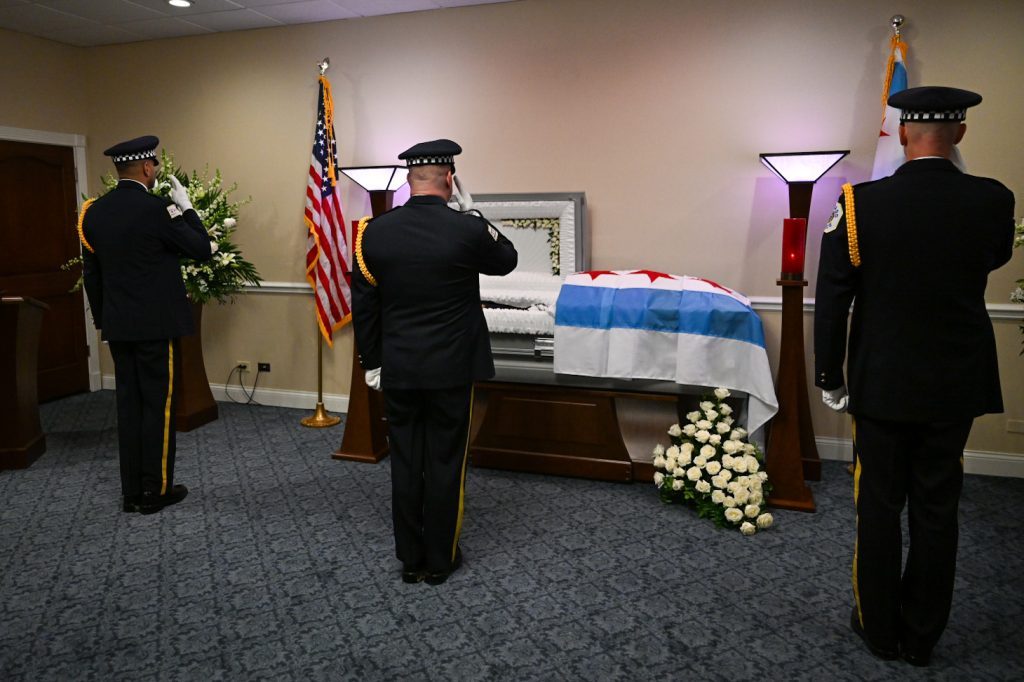
‘A man of honor, a beacon of kindness’
Spread the love. Chicago weeps for Officer Luis Huesca . By Tim Hadac People across the Southwest Side shed tears earlier this week, as throngs of police officers and other filled the St. Rita of Cascia Shrine Chapel at 77th and Western for a funeral Mass for CPD Officer Luis M. Huesca. Officer Huesca was…

Archer Manor Little League starts its 2024 season
Spread the love. Sunny skies and mild temperatures greeted the boys and girls, moms and dads, umpires and coaches, and everyone else participating in Archer Manor Little League’s Opening Day parade and ceremonies at Archer Park. Since 1952, AMLL has provided athletic opportunities for thousands of boys and girls in Archer Heights, West Elsdon, Central…

Dread over car drifters on streets
Spread the love. Reckless drivers take over SW Side intersections . By Tim Hadac At the April meeting of the Garfield Ridge Neighborhood Watch, a police officer admitted that the drag racing/drifting phenomenon seen and heard in the Midway area in recent years “probably will increase, but we hope not.” The admission was triggered by…
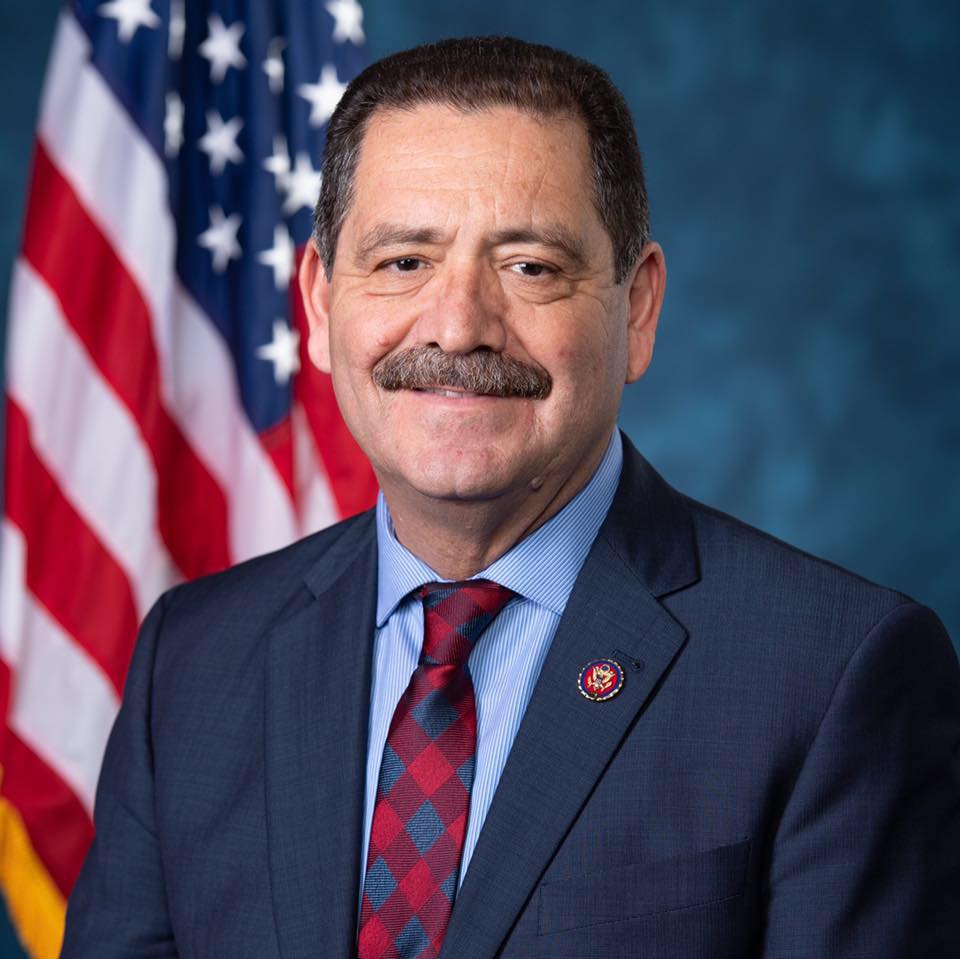
Don’t raise pilots’ retirement age, García says
Spread the love. From staff reports U.S. Rep. Jesús “Chuy” García (D-4th), senior member of the Transportation and Infrastructure Committee, recently led a letter joined by 121 Members of Congress urging House Democratic leadership to reject any changes to the pilot retirement age in a final version of the Federal Aviation Administration (FAA) reauthorization bill.…
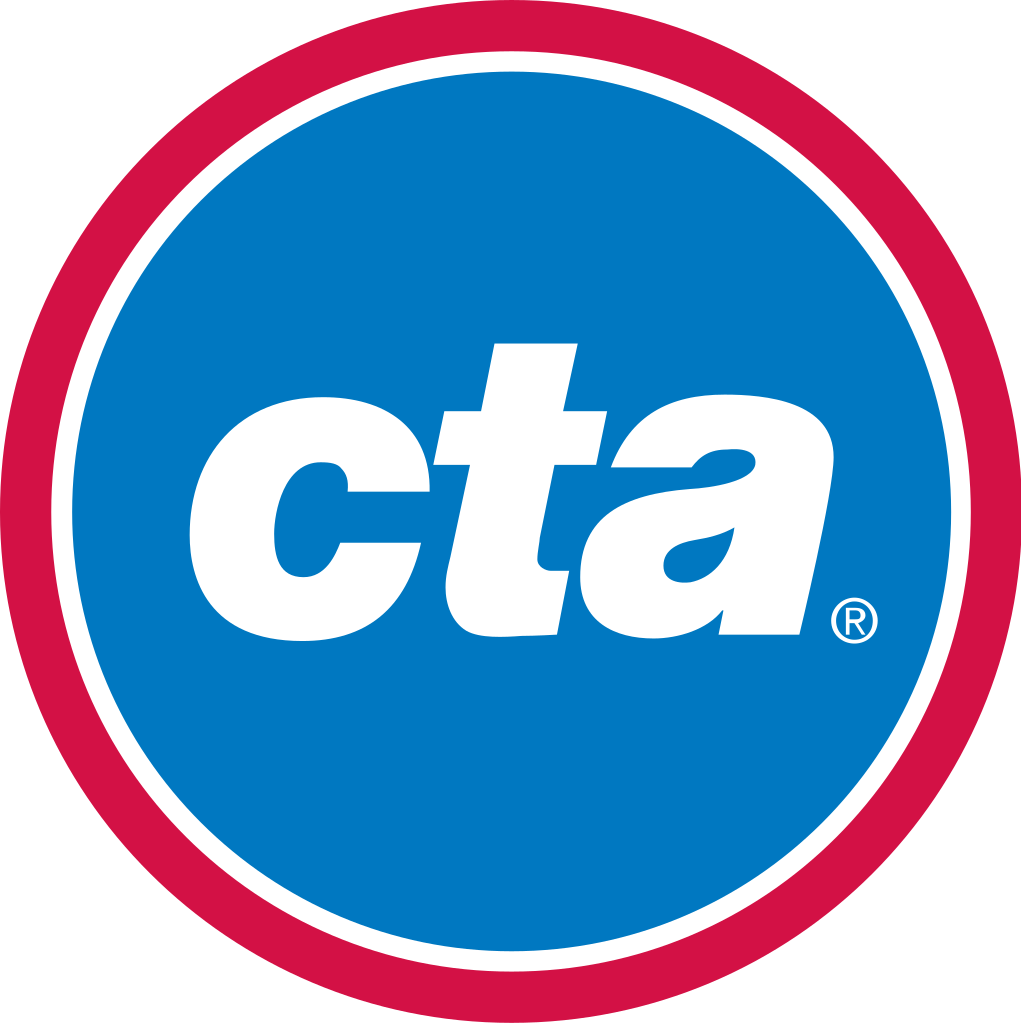
CTA launches ‘chat’ feature on website
Spread the love. From staff reports Artificial Intelligence has made another step forward at the Chicago Transit Authority. CTA officials recently launched the “Chat with CTA” chatbot, a new virtual automated service featured on transitchicago.com. The communication tool allows riders to report issues, provide feedback and receive answers in real-time. Additionally, it provides the CTA with customer…

New effort to aid kids with disabilities
Spread the love. From staff reports A new grant program aimed at providing financial assistance to families of children with disabilities was launched recently by Mayor Brandon Johnson, in partnership with the Mayor’s Office for People with Disabilities and Ada S. McKinley Community Services. Children with disabilities is a population disproportionately affected by the pandemic,…
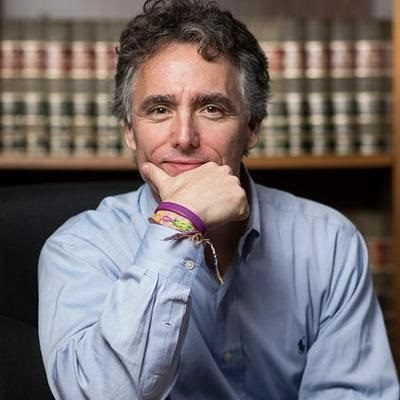
Dart warns of Sheriff’s Office imposters
Spread the love. From staff reports Cook County Sheriff Thomas J. Dart recently alerted the public of an uptick in telephone and email phishing scams in which scammers identify themselves as a Sheriff’s Office employee in an attempt to defraud victims. Scammers are using the actual names and respective titles of Sheriff’s Office employees to…

It’s ‘Batter up!’ time in West Lawn
Spread the love. Peggy Zabicki Your correspondent in West Lawn 3633 W. 60th Place • (773) 504-9327 . It must be May because baseball season is here. I recently reported on the West Lawn Little League, whose 2024 season is now underway. Another West Lawn youth athletic association is Midway Baseball Softball Association. Their teams…
Neighbors

Swanson scores, assists in Red Stars’ win over Reign
Spread the loveThe Red Stars improved to 3-1-1 by beating the Seattle Reign, 2-1, on the road on April 21. Mallory Swanson had an assist on an Ali Schlegel goal in the fourth minute and added a goal of her own in the 31st minute. Swanson missed last season after sustaining a knee injury on…
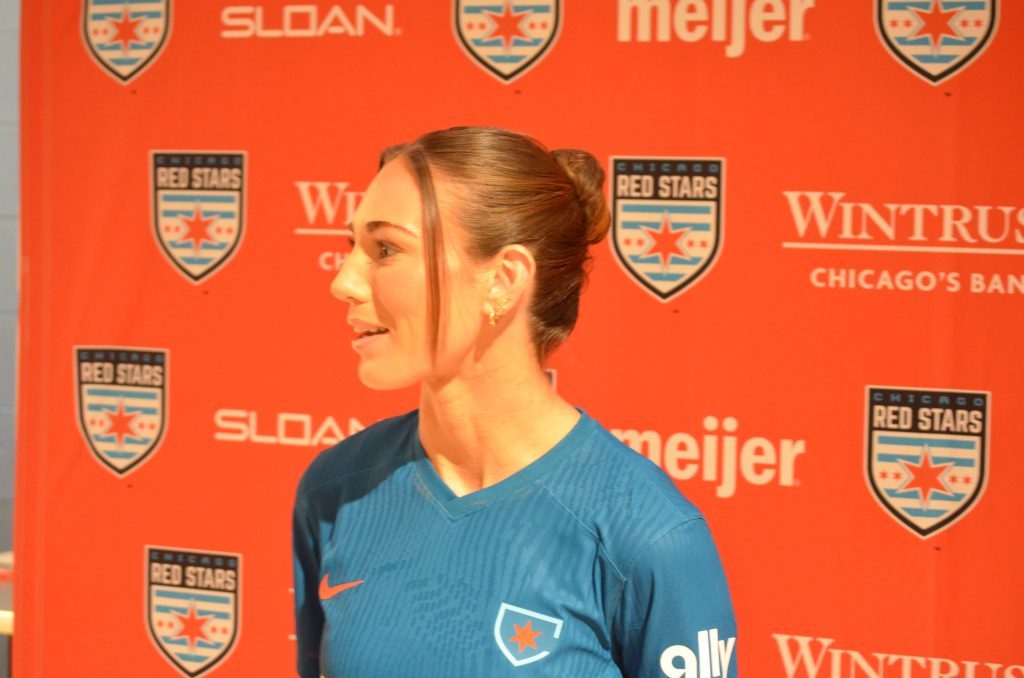
Red Stars’ Tatumn Milazzo has top Save of the Week
Spread the loveBy Jeff Vorva Correspondent Tatumn Milazzo called her achievement “funny.” The Chicago Red Stars defender and Orland Park native was awarded the NWSL’s Save of the Week after chasing down a ball in a loss to Angel City on April 13. The Save of the Week usually goes to a goalie. Milazzo laughed…

Men’s College Volleyball | Saint Xavier captures fifth straight conference tourney title
Spread the loveBy Jeff Vorva Correspondent The SXU men’s volleyball team won its fifth straight Chicagoland Christian Athletic Conference tournament championship after a 25-16, 25-17, 25-22 sweep of Calumet College of St. Joseph on April 20 at the Shannon Center. Jan Lopuch had 10 kills and nine digs for the Cougars. With the win, the…

College Baseball | Saint Xavier upsets Eastern Illinois
Spread the loveBy Jeff Vorva Correspondent The Saint Xavier baseball team picked up a win that its players are going to remember for a long time. The Cougars stunned Eastern Illinois, 4-2, on April 17 in Charleston. It was the Cougars’ first win over the Panthers, a Division I program, since 2005. Lyons grad Troy…
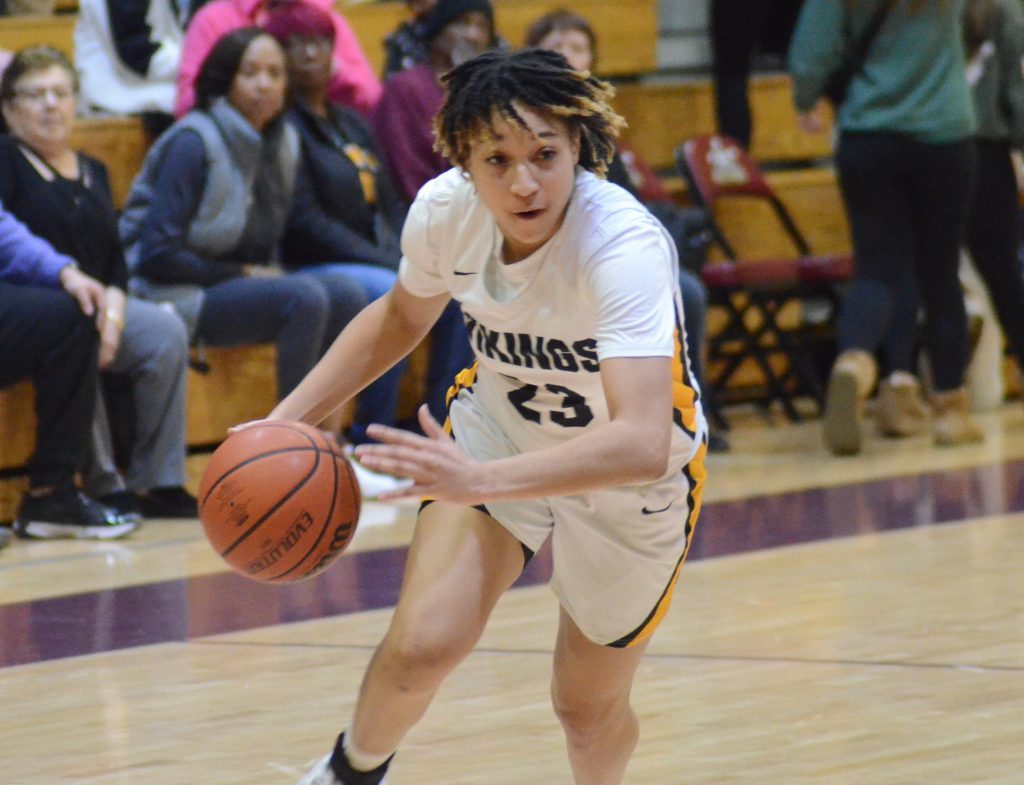
St. Laurence hoops teams top honor roll
Spread the loveBy Jeff Vorva Correspondent Area basketball teams proved to be strong on the court and in the classroom this season, and St. Laurence was the leader of the pack. The Illinois Basketball Coaches Association compiled a list of the top academic teams, and the area did well. In Division 3 girls, St. Laurence…
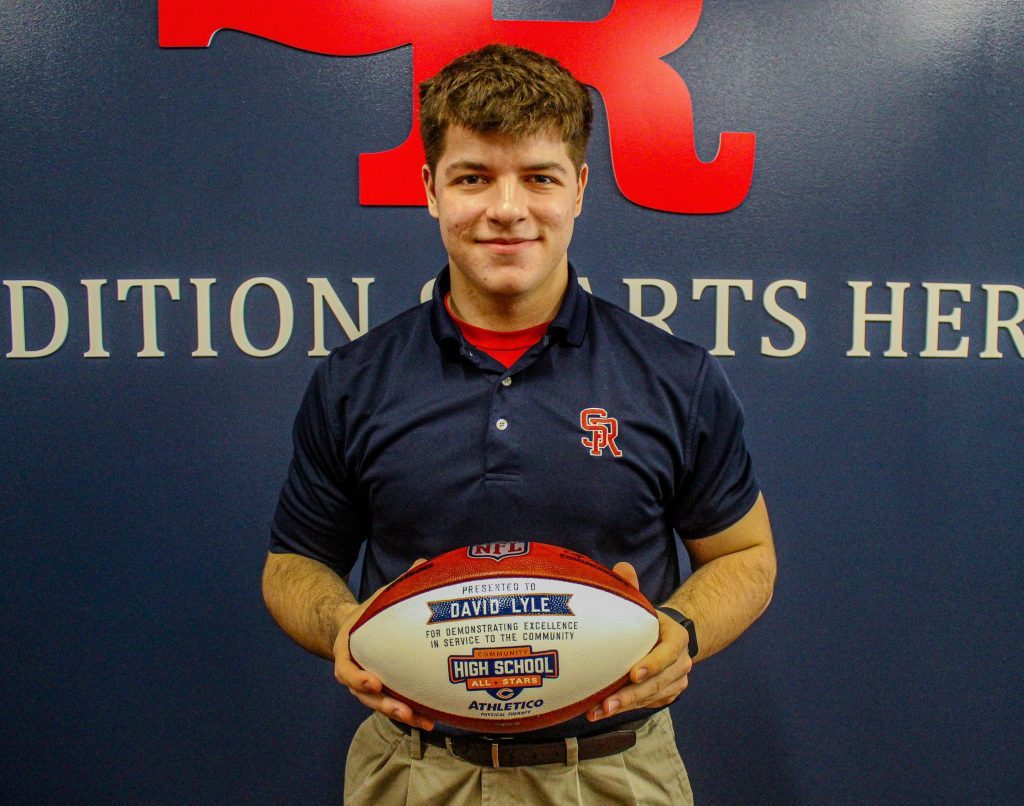
Chicago Bears recognize St. Rita senior with All-Star award
Spread the loveBy Jeff Vorva Correspondent Chances are good that few outside of St. Rita football circles know who David Lyle is. With good reason. Lyle missed his senior season for the Mustangs last fall after sustaining a serious knee injury. He even postponed having knee surgery so that he could take care of his…
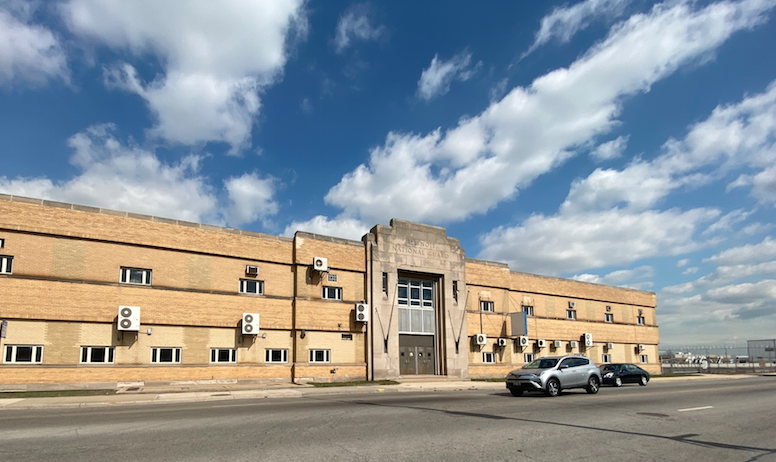
Pols want 63rd St. armory for new police HQ
Spread the love. Porfirio, Guerrero-Cuellar push plan in Springfield . By Tim Hadac Any plans the Chicago Department of Aviation may have had for the vacant Army National Guard Midway Armory, 5400 W. 63rd St., may be grounded, at least for now. Several elected officials are eyeing the parcel as the headquarters of a new…
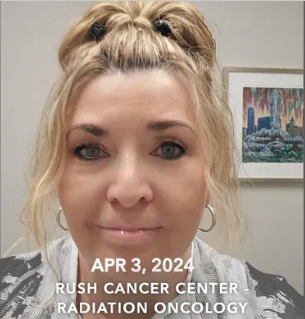
Her back against the wall, Stacy needs help
Spread the love. By Tim Hadac Editor Clear-Ridge Reporter & NewsHound (708)-496-0265 . Clearing and Garfield Ridge have earned a reputation as a place where people look out for each other—and that sometimes means caring for each other in times of need. Today, I want to talk about one such person, who sure could use…

It’s (pizza) party time at OLS
Spread the love. Third graders at Our Lady of the Snows School break into cheers as they learn they’ve won a pizza party for selling more raffle booklets than any other class. The recent Grand Raffle fundraiser brought in about $6,000. Parents looking for a grade school for their sons and daughters for 2024-25 are…






